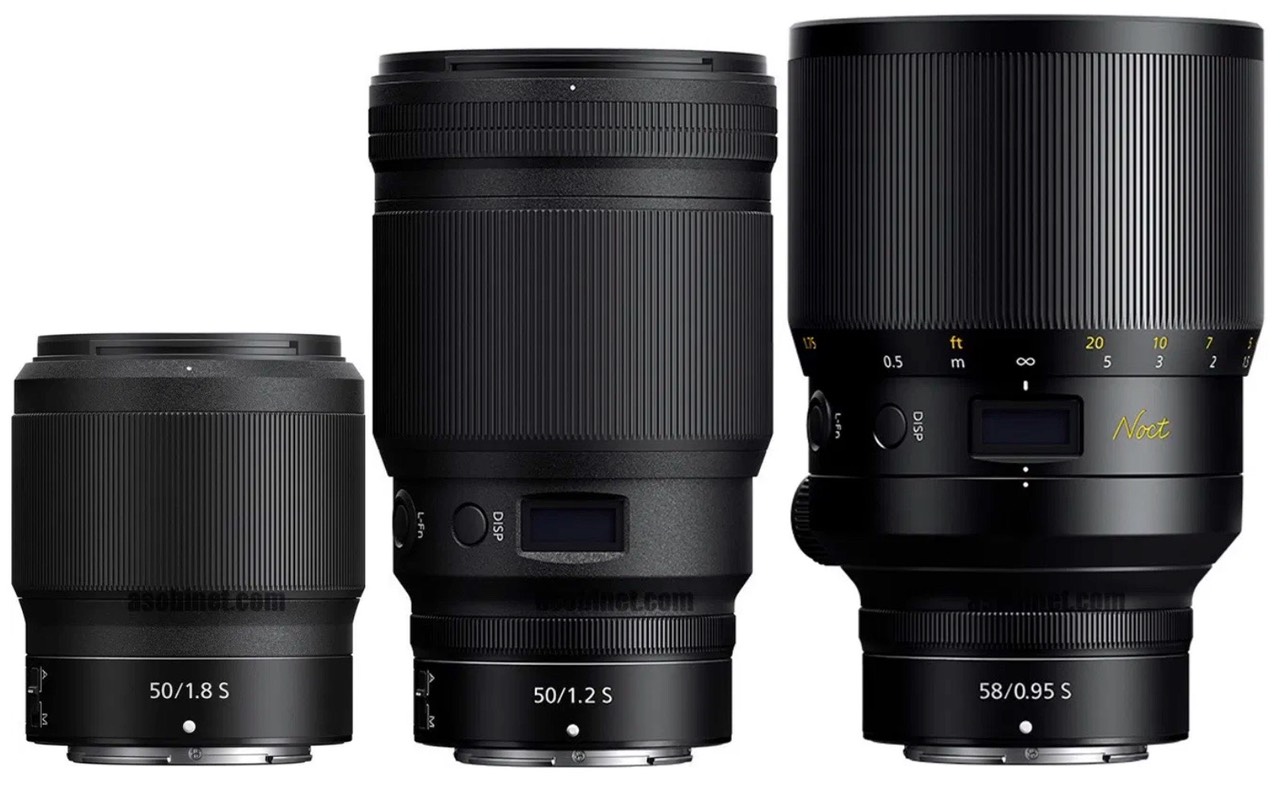Nikon today announced the 50mm f/1.2 S and 14-24mm f/2.8 S lenses, the final two Z lenses that were expected in 2020. As seems to be Nikon's approach these days, it was another announcement by press release, and those of us in the press still had to dig for further details and photos.

The 50mm f/1.2 (in middle) is a US$2100 lens touted as symmetrical in optical design, with dual focus motors moving smaller elements shorter distances for speed and precision. Nikon makes the claim of virtually no focus-breathing, which is curious, as they have quietly made that same argument for other Z lenses. I think the difference this time is that the optics alone do the work, whereas with other Z lenses holding the field of view constant is partly done by the lens corrections in camera. But you can never be sure about this sort of thing for a bit, because Nikon doesn't actively make engineers available to the press to discuss key details like that, particularly when they're doing announce-by-press-release.
Note that the 50mm is a big, heavy lens, much like the NOCT. It weighs in at nearly two-and-a-half pounds (1090g) and is the size of some fast zooms. It does have all of Nikon's "goodies" (OLED display, for example), is coated in Arneo, Nano, Fluorine, and multilayer SIC to hold down flare and ghosting and keep that big 82mm front element from collecting fingerprints, dust, and moisture. You won't see this lens until December, though.
So now we have an exceptional 50mm (f/1.8 S), a probably more exceptional 50mm (f/1.2 S), and an outlandishly exceptional 58mm (f/0.95 NOCT). What we don't have, Nikon, is a small workhorse 50mm ;~).
The 14-24mm f/2.8 S (left) rounds out the trio of fast zooms, and does so much like the 24-70mm: smaller and lighter than we're used to, and probably better optically. Nikon claims it's the shortest, lightest f/2.8 ultra-wide zoom (full frame). Follow the links for the tech specs on that (and other attributes). More important, Nikon is touting this US$2400 lens as optimal for a wide range of tasks, including astrophotography (with pinpoint stars into the corners due to low coma). It comes with two lens hoods, one of which has a 112mm filter ring built into it, so, yes, we finally get a landscape wide-angle zoom from Nikon that plays to all the needs.
The 14-24mm will be available in November. Like the other f/2.8 S zooms, I expect it to be in short supply for a while as all the NPS pros step in with priority purchase orders.
Now for the thing that hasn't been written about elsewhere.
Were these lenses originally targeted to launch with bodies? I think so, particularly the 50mm f/1.2. We're at the two-year point where the Z6 and Z7 body iterations ought to be in sight. Moreover, the high precedence given to ultimate resolution doesn't fully resonate now with Nikon at 45mp and Sony at 61mp.
The problem, of course, is that both glass and image sensors aren't 100% predictable in when they're ready. Critical path issues can rise up with both things for really small problems, and you don't just "fix" glass and silicon instantly. I think the lensineers beat the silicon manipulators to the punch this round. But that's also another way of saying I don't think that the next round of bodies from Nikon are that far off.
Finally, we're left with what's left. By that I mean what's still on the known lens road map that hasn't appeared yet. For 2021 we should get:
- 18-140mm DX
- 24-105mm f/2.8-4 S
- 28mm compact
- 40mm compact
- 50mm f/2.8 Micro-Nikkor
- 100-400mm f/4-5.6 S
- 105mm f/2.8 Micro-Nikkor
- 200-600mm f/4.5-6.3?
- and at least one surprise
Now let's hope that things settle down a bit with the pandemic so that we can work back towards using all these great new products.
